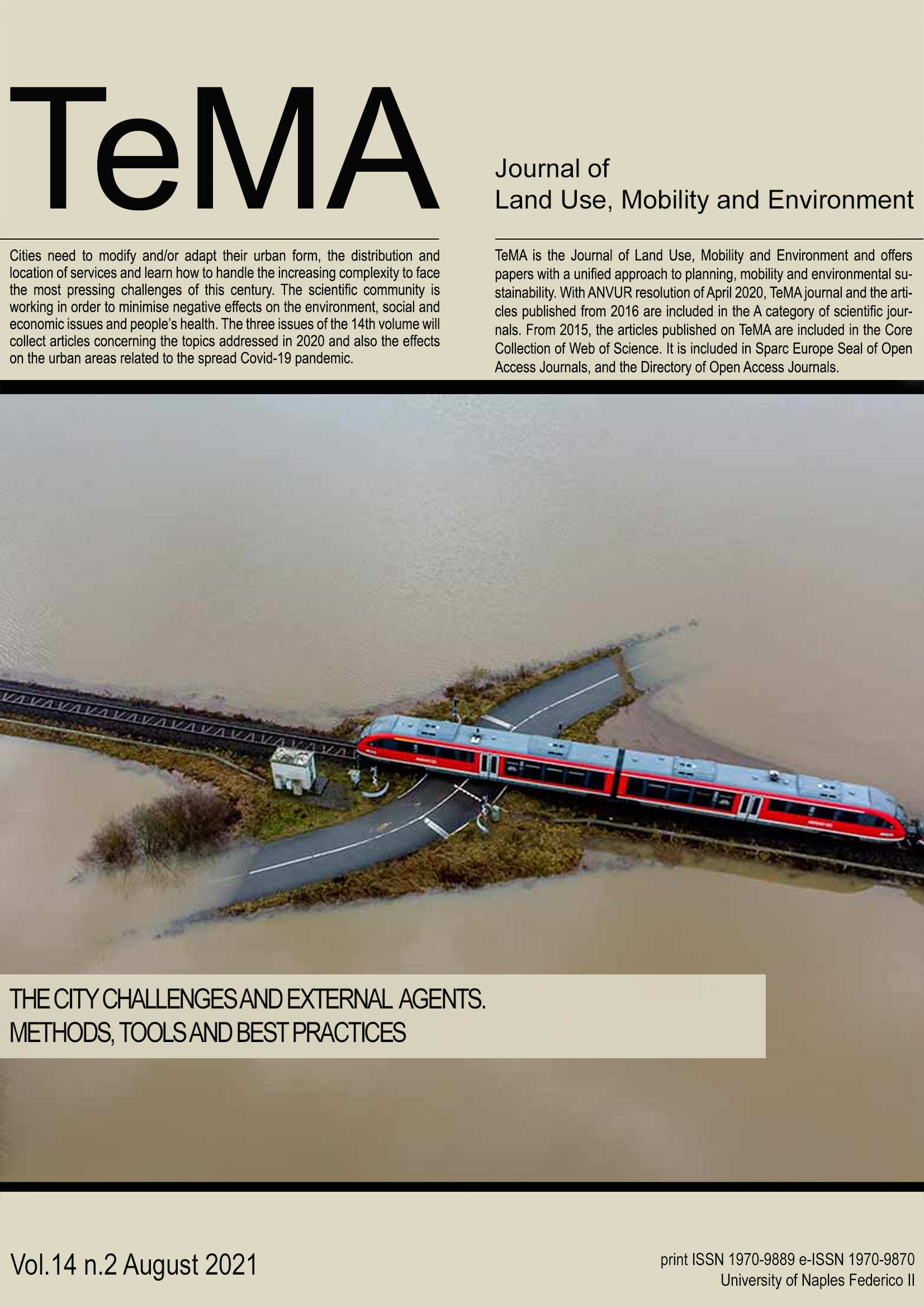Investigation of the effects of urban density on pandemic
DOI:
https://doi.org/10.6093/1970-9870/7923Keywords:
urban density, covid-19, image processingAbstract
Decisions regarding land use are amongst the most important decisions of a city planning process, and density arrangement is one of the key parameters for it. The effects of urban density on the Covid-19 infection are evaluated in this study through the sample case of İskenderun district, which was divided into 3 main urban population density regions (high, medium, low). The course of the Covid-19 pandemic was then followed through the number of cases in the period of September-December 2020 for these regions. The case data were obtained from the “HES” application developed by the Ministry of Health of the Republic of Turkey to monitor the spread of the Covid-19 pandemic, and the case density maps recorded in the application for this purpose were digitized through an in-house image processing software. As a result of the examination, it was understood that the rate of increase and the density of cases in regions with high housing density was higher than that of regions with lower densities, with PI (Pandemic Index) values of 173.83 and 39.40 for high and low densities, respectively. The results are indicative that the lack of urban land production and high population concentration, which have become important problems of developing countries and regions due to rapid population growth, are indeed strong factors for the spread of diseases, such as the Covid-19 pandemic.
Downloads
Downloads
Published
How to Cite
Issue
Section
License



